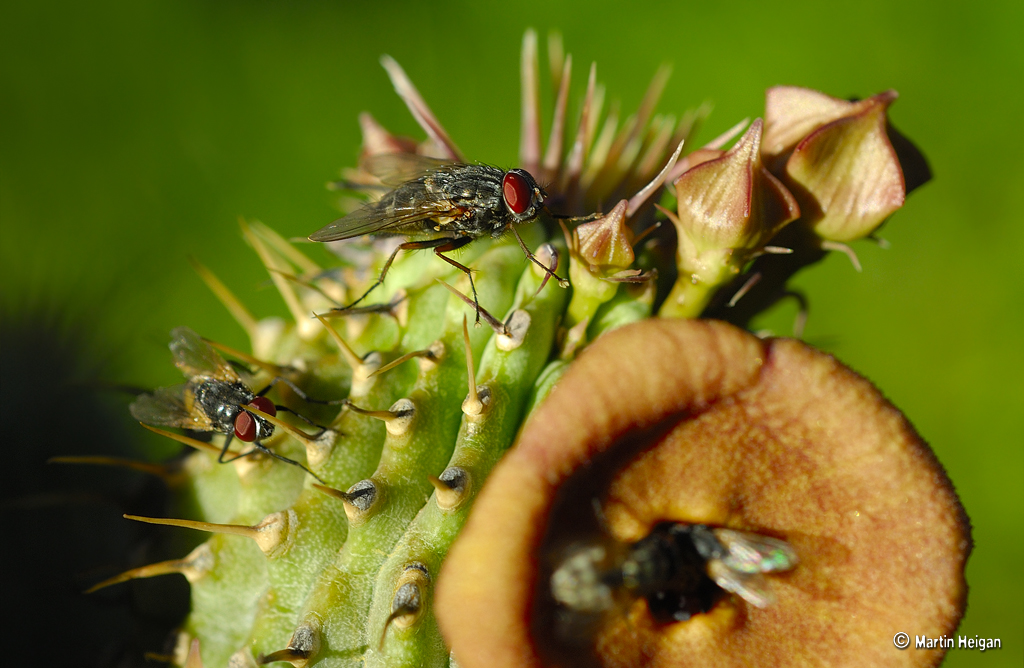Interactions
Hoodia gordonii's life is dependent on interactions with other organisms. Other organisms also depend on Hoodia gordonii for survival.
Flies are the most important organisms when it comes to the life cycle of Hoodia gordonii. The plant has especially adapted jut to attract these insects (go to the Adaptation page to read more about this). Flies are responsible for pollinating Hoodia gordonii. They are attracted to the flowers and when they land on them, they get the pollen on their bodies and spread it by moving to the next flower. Flies and Hoodia gordonii have a symbiotic relationship. More specifically, they are engaging in commensalism, meaning both organisms benefit from the relationship. The fly helps the plant by assisting it with pollination and the plants helps the fly by providing a nutrients.
Other insects and other small organisms:
Hoodia gordonii's structure provides protection for an array of insects and other small organisms in its habitat. It provides the ultimate breeding ground where there organisms can lay their eggs or have their young and have it be protected from the outside world. This is another symbiotic relationship that is referred to as mutualism. This means one organism benefits from the relationship and the other is does not, but is not harmed. In this care, the small animals benefit and the Hoodia gordonii is not harmed.
Hoodia gordonii grows in dense clusters with lots of room for small critters to lay their eggs or have their young in peace. Organism can also seek refuge themselves between the thick prickly stems.
Hoodia gordonii is not consumed by any animals in it's habitat. It's only "predator" is humans, which may be driving the plant to extinction due to it's cultivation to make weight loss products (read more about this on the Facts page).

